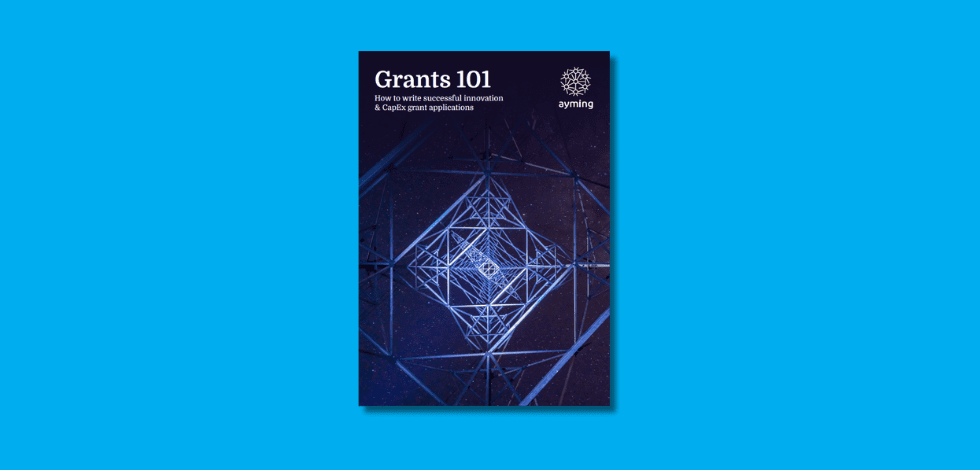The UK’s Advance Assurance scheme was introduced two years ago by the Government in a bid to provide businesses with greater visibility and certainty when making Research and Development (R&D) tax relief claims. However, it would appear the scheme, which is geared towards businesses that have an annual turnover of up to £2 million, less than 50 employees and never previously claimed R&D tax relief, has attracted somewhat of a lukewarm response.
According to the Advance Assurance webinar hosted by the HMRC in August last year, there were only 200 applications between November 2015 and August last year – the first ten months of the scheme.
The term ‘Advance Assurance’ has been around since 2012, when it was introduced as a similar initiative for EIS and SEIS share schemes. However, whilst the level of assurance it provides has resulted in significant uptake and enables companies to list their shares to attract EIS and SEIS relief on websites such as crowdcube.com; when it comes to R&D assurance, it’s a totally different story.
Advance Assurance is aimed at micro-SMEs, but in reality, it can be difficult for such small businesses to factor R&D into their projects. Many of them don’t set out to undertake R&D and often implement it once a project develops. For those who do start out with R&D in mind, it’s rare for them to have plans of what they’ll be working on one, two, or even three years down the line, unless they’ve been set up to develop a specific asset. For this reason, the scheme is restricted to companies that would actually benefit the least from it.
Target audience isn’t the only factor at play here either. At present, if Advance Assurance is granted, while businesses don’t need to submit a full report, HMRC still requires a report that evidences the R&D activities that have been carried out. As a result, applying for Advance Assurance actually increases the administrative burden placed on businesses wanting to make R&D claims. This is something that smaller business can’t afford, especially when they’re likely to need to hire a specialist to file the Advance Assurance on their behalf. Unfortunately, this is where Advance Assurance falls short once again.
Interestingly, the number of submitted R&D claims has increased over the past few years. In fact, it nearly doubled between 2011/12 to 2014/15, according to the latest statistics released in September last year. However, general awareness of the R&D scheme is not that prevalent across the country.
Most companies are learning about R&D tax after they’ve already conducted R&D. As a result, their first foray into R&D tax is to submit a retrospective claim for previous periods instead of looking ahead. The knock-on effect of this is that they’re instantly prevented from being eligible for venturing down the Advance Assurance route, even if they wanted to. For this reason, not only the turnover and headcount limitations, but also the claiming history restriction should be removed if HMRC genuinely wants to significantly increase uptake and for businesses to benefit from the initiative how they originally intended.
Before the recent reorganisation of HMRC’s R&D units at the end of 2016, companies who’d previously submitted R&D claims knew which inspector would be dealing with their application each year, as that inspector would have been allocated a specific caseload of companies. This meant businesses were able to informally discuss future applications and methodologies with the person who would be ultimately reviewing their claim.
Since the reorganisation, R&D claims are assigned based on inspector availability, which makes it impossible for businesses to know who’ll be looking at their claim. Whilst HMRC advocate it’s ‘one voice’, it’s human nature that, due to varying backgrounds and experiences, there’s always going to be slightly different expectations and interpretation of the legislation by inspectors and a preferred presentation of information. Guidance that’s been provided by one inspector wouldn’t bind the inspector who’s ultimately reviewing the claim.
By removing the certainty of which HMRC inspector will be reviewing claims, HMRC has taken away this ‘informal advance assurance’ and is yet to put a workable mechanism in place to fill the void for companies who’ve previously filed claims.
For large companies with an HMRC Customer Relationship Manager (CRM) they do have a specific contact, who they can informally discuss their future R&D claims with. However, this is still an informal process and can be hit and miss at times, depending on the appetite of the CRM to enter into R&D tax relief discussions when they’re likely to have no previous experience. Whilst we have recently embarked on a very successful process with a top ten construction company, there have been instances where CRMs have indicated they don’t know enough about the R&D tax scheme and will only involve a specialist after the claim has been submitted.
Providing assurance around the world
Interestingly, similar initiatives to Advance Assurance have been implemented in many other countries, but in completely different ways:
South Africa
In South Africa, it’s compulsory to register every eligible project before the accounting period begins. Since October 1, 2012, all companies have to submit applications to the Department of Science and Technology before any R&D work has started. Only expenditure incurred after applications is eligible.
As a result, this makes planning for ‘on the job’ projects incredibly difficult to predict.
Australia
In Australia, an optional Advance Finding scheme is in place, in which any company, regardless of their size or claiming history, can apply for project pre-approval via the Australian Tax Office.
Unlike our scheme, businesses are given a binding decision on the eligibility of their projects, providing they’ve ‘registered the project’ before the end of an accounting period and they stick to the nature of the work detailed in their Advance Finding.
Irrespective of applying for an Advance Finding, Australia requires every project to be registered within ten months of a year-end.
Whilst the introduction of Advance Assurance in the UK is a positive step in the right direction, the UK Government has only dipped its toe in to giving businesses the clarity they require for their R&D activity.
Although there are instances where pre-registration has gone too far (South Africa), and the requirement to register every project even after the year-end (Australia) can be incredibly burdensome, especially for companies carrying out hundreds of projects every year, there’s one lesson I encourage HMRC to take from our Australian counterparts; and that’s extending the scope of Advance Assurance to companies of all sizes, irrespective of claiming history.
Yes, it may increase the workload on an already overstretched and under-resourced HMRC, by allowing all companies, irrespective of their claiming history, to seek less guidance and more guarantee, but HMRC may also see an increase in take-up of the regime too.
In the most recent Budget, Chancellor, Philip Hammond, stated he would be looking to bring forward measures to reduce the administrative burden of submitting R&D claims and that our regime was ‘globally competitive’.
With that in mind, now’s the time to take some of these valuable global lessons on board and enhance the current scheme, so that it caters for all business types and gives less guidance and greater visibility with more guaranteed assurance for UK companies.













No Comments